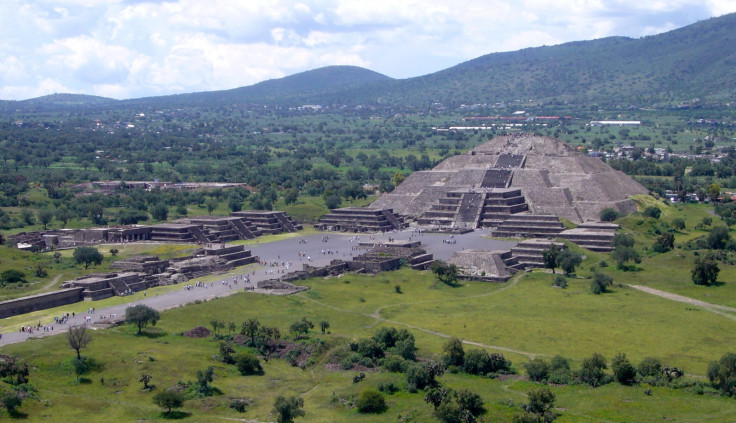Archaeologists discover 'underworld tunnel' below Teotihuacán's Pyramid of the Moon
The Pyramid of the Moon is the second largest structure at Teotihuacán.

Below the large and majestic Pyramid of the Moon, in the ancient city of Teotihuacán in Mexico, archaeologists have discovered a secret tunnel constructed by a pre-Aztec civilisation that inhabited the site around 2,000 years ago.
The Pyramid of the Moon is the second largest structure at the site after the Pyramid of the Sun, rising to 140 feet (43 metres). Human sacrifices and other bloody rituals are thought to have taken place at the site, as human remains from burial sites suggest.
A team from Mexico's National Institute of Anthropology and History (INAH) were excavating the large central square by the Pyramid of the Moon, known as Plaza de la Luna, when they came across a cavity below the ground.
Other similar features have previously been discovered in recent years below other buildings at Teotihuacán, including one tunnel at the Temple of the Plumed Serpent.
A representation of the underworld
The newly discovered tunnel is long, going from the centre of the square to the pyramid. Archaeologists believe it might represent the underworld, in the complex belief system of this ancient pre-Colombian civilisation.

"The finding confirms that Teotihuacans reproduced the same pattern of tunnels associated with their great monuments, whose function had to be the emulation of the underworld," said archaeologist Verónica Ortega, who leads the conservation project of the Plaza de la Luna.
The tunnel was discovered at the beginning of June, when the archaeologists used a method known as electrical resistivity tomography, which involves imaging structures located beneath the Earth from electrical measurements made at the surface.
They have not accessed it directly but with this method, they were able to reveal a 10-metre-deep cavity was hidden below the ground, going from the square to the pyramid.
Now, the researchers will have to conduct more investigations to learn more about the features of this tunnel and find out what purpose it would have served. They think it might contain artefacts, but more research will have to be conducted to confirm the presence of the tunnel before it can be explored.
Nevertheless, the discovery might represent an important step to understand the culture of the ancient civilisation who built the Pyramid of the Moon some 2,000 years ago.
"The function of the tunnel may have been to reproduce the underworld, a world where life, animals and plants originated. It's possible that it was used purely for rituals, as part of ceremonies to celebrate the agricultural cycles," Ortega pointed out.
© Copyright IBTimes 2025. All rights reserved.






















